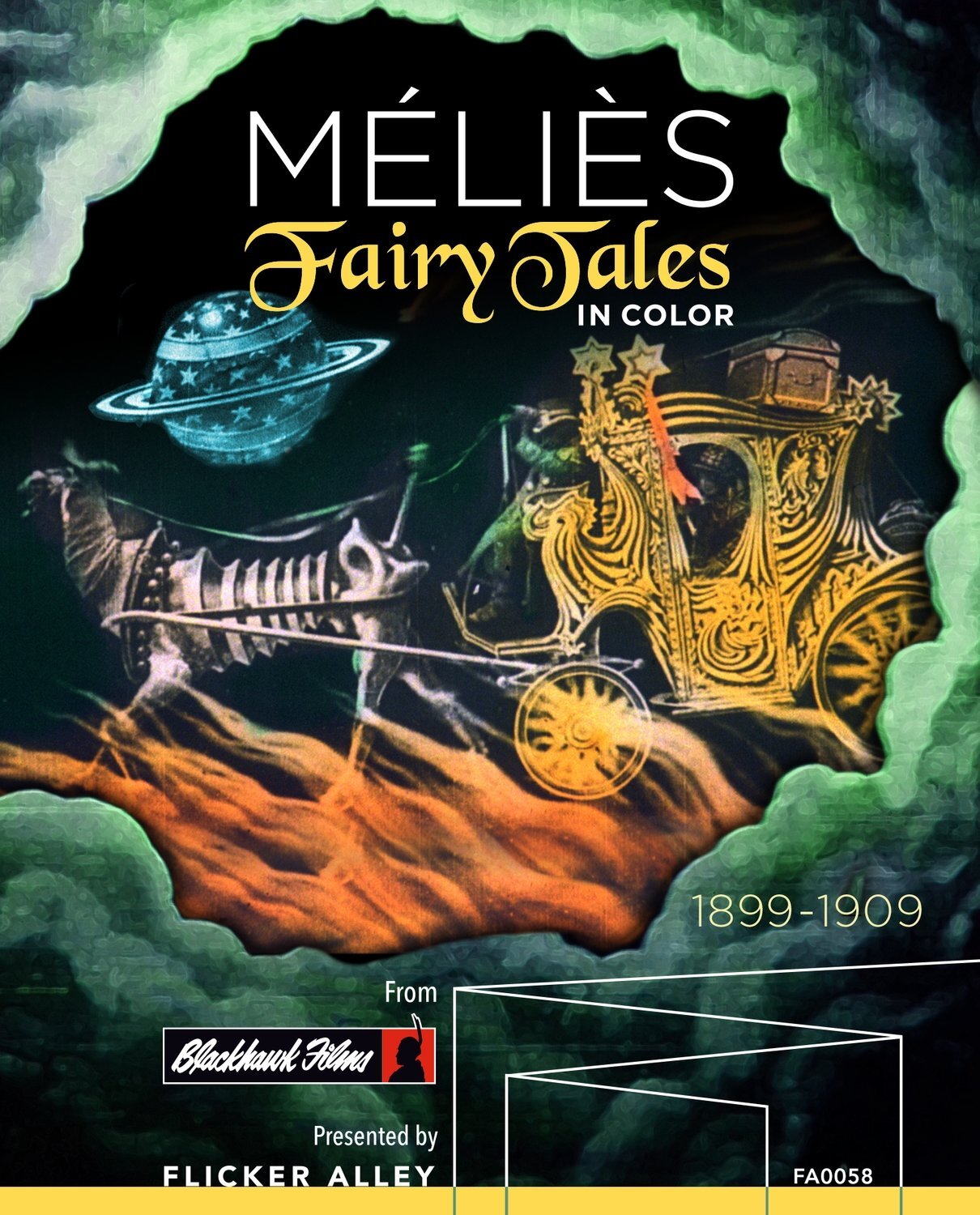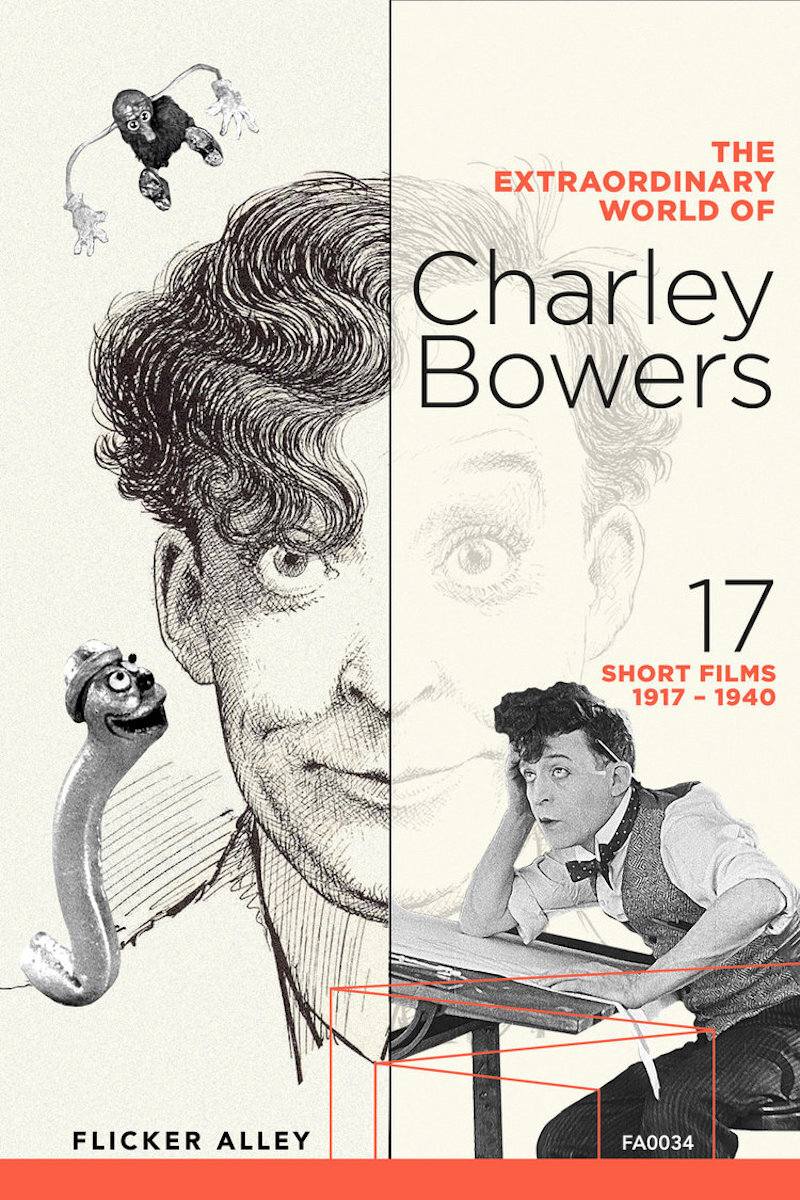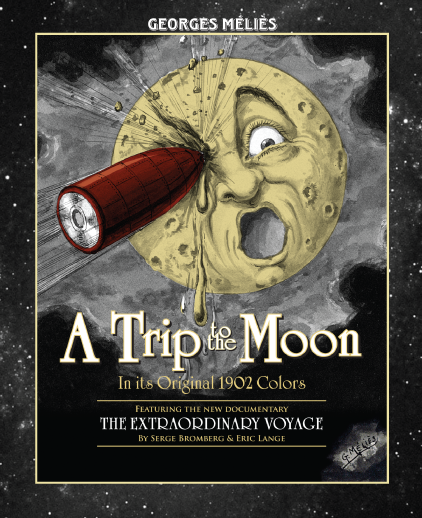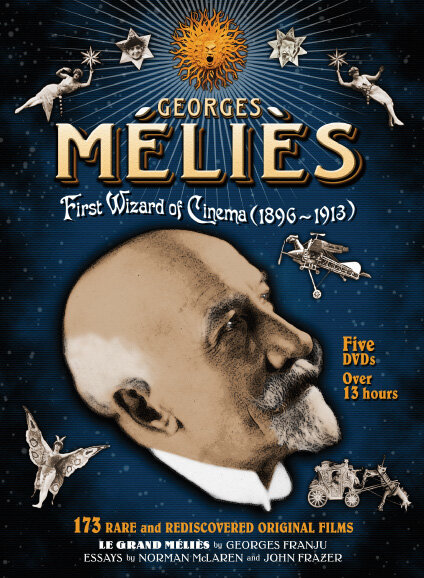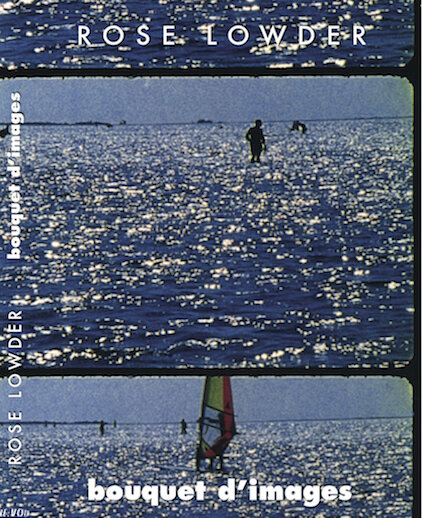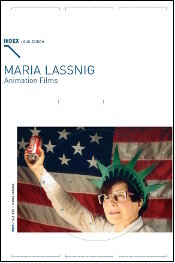GME Presents DVD Fall Flashbacks - Between Animation and Live Action: Georges Méliès, Charley Bowers, and Jeff Scher
/MÉLIÈS: FAIRY TALES IN COLOR is GME’s fourth release of films by Georges Méliès this pioneer of the fantasy and trick film genre working at the dawn of cinema. This digital edition contains 13 of Méliès’s narrative tales produced between 1899 and 1909. The subject of these stories range from historic (JOAN OF ARC, RIP VAN WINKLE, and ROBINSON CRUSOE), to futuristic (A TRIP TO THE MOON, THE IMPOSSIBLE VOYAGE, and THE INVENTOR CRAZYBRAIN AND HIS WONDERFUL AIRSHIP), and diabolic (THE MERRY FROLICS OF SATAN and THE WITCH). These films are noteworthy for their elaborately painted perspective sets and demonstrative acting style. They are replete with Méliès’s mastery of the technique of stop-motion animation to transform objects (e.g., a fire into the devil), and to create spontaneous appearances and disappearances of various characters. The sets and stop motion techniques are augmented by superimpositions as well. What distinguishes the Méliès films in this combined Blu-ray and DVD release is the reproduction of the elaborate hand-painted handiwork of the original colorists (vibrant reds, blues, yellows, oranges, and purples). After Méliès shot his films in his studio in Montreuil, he worked with Mrs. Elisabeth Thuillier on rue du Bac in Paris to set up a unit to hand paint each film print. Individual colorists would spend hours with a brush, painting every detail of each image with aniline dyes. In 1905 alone, there were about 200 colorists working in the atelier. These source prints were digitally restored so as to eliminate scratches and other visual defects, while retaining the color tonalities.
Méliès’s concept for his screenings was to have a narrator accompanying the projection each time a film was shown. His catalogues therefore contained scene-by-scene summaries of the films. The “bonimenteur” (orator) would improvise dialogue based on these descriptions, sometimes adapting his comments to the audience’s reactions. In addition, each film on these discs contain originally-commissioned scores, as well as an alternate track which also includes voiceover narration. This release, then, of MÉLIÈS: FAIRY TALES IN COLOR most extensively recreates the viewing experience of these films as they would have originally been shown.
◊
The publication of a 2 disc Blu-ray edition of THE EXTRAORDINARY WORLD OF CHARLEY BOWERS heralds the (re)discovery of a forgotten animator and silent comic named Charley Bowers. Neither historians of silent film comedy nor of animation films initially recognized the importance of Charley Bowers. He did not receive a mention in Walter Kerr’s landmark book, The Silent Clowns (1975), nor in Neil Pettigrew’s authoritative history, The Stop-Motion Filmography (1999). it was only at the Annecy International Animated Film Festival in the late 1970s that Raymonde Borde at the Cinémathèque de Toulouse began to revive his career by screening several films starring the French character “Bricolo” (roughly understood to mean a do-it-yourself tinkerer), eventually linking this character name to that of Charley Bowers. Not until the 2000s, under the initiative of Serge Bromberg and Lobster Films did the work of identifying and promoting the oeuvre of Charley Bowers develop in earnest. With this digital edition, the academic community is afforded an opportunity to assess Bowers’s work in relation to the canons of silent comedy and film animation.
Between 1916 and 1926, Bowers wrote, produced and directed hundreds of cartoon film shorts, primarily based on the Mutt and Jeff comic strips. He then began the transition from hand drawn cel animation to stop-motion animation. Between 1926 and 1930, he starred in and co-directed (with H.L. Muller) a series of 18 films in which he combined live action with stop-motion object animation, which has come to be known as the “Bowers process”.
These Bowers films are unique and distinct from those of his more famous contemporaries, Chaplin, Keaton, and Lloyd. Although Bowers himself lacked the comic timing and physical polish of his contemporaries , he excelled as a man caught in the machine age, an eccentric but brilliant inventor. In HE DONE HIS BEST (1926), a machine automatically sets the table; in EGGED ON (1926), a swarm of cars hatch from a batch of eggs; and in A WILD ROOMER (1926), a gigantic mobile machine performs all sorts of household tasks. In other films, Charley invents automated dancing shoes and a no-slip banana peel. As Sean Axmaker writes in his article “Celebrating Bricolo” for the booklet accompanying this Blu-ray edition: “Bowers’ films, like Buster Keaton’s shorts and features, share a fascination with machines and technology. But where Keaton took an engineer’s delight in the operations and mechanical possibilities of steam engines and paddle boats, Bowers applied the limitless imagination of a cartoonist and the tools of stop-motion animation to push the conceptual possibilities of his devices beyond the limitations of physics and into the realm of fantasy…His crazy contraptions have been compared to the cartoons of Rube Goldberg. But where Goldberg created absurdly elaborate constructions to accomplish mundane tasks, Bowers imagines the impossible and constructs it out of familiar objects in front of our eyes. A cartoonist using the physical world as his canvas, he’s the inventor as a magician and fabulist.”
Photoplay magazine editor James R. Quirk wrote that “in the world’s most individualistic industry, he is Aladdin and the camera is his lamp”; archivist Raymond Borde wrote that these films “take on a disorderly life of their own, obeying nothing but the logic of a dream”. They were thus greatly admired by surrealist André Breton. Charley Bowers -- cartoonist, animator, director, and silent movie comic -- created some of the most imaginative, idiosyncratic and surreal short comedies of the 1920s.
◊
Artist Jeff Scher studied at Bard College (a university focused on the creative and performing arts) under Adolfas Mekas (HALLELUJAH THE HILLS,1963). His thesis film was NYC (1976), in which he was already focused on stop-motion animation in terms of single framing advance of the camera shutter. As he already realized early on, “The difference between live action (recording at the same speed as playback) and animation is that live action records time, while animation constructs it one sliver at a time.” He then turned to the technique of rotoscoping in his ensuing film, REASONS TO BE GLAD (1980), and continued this technique over the course of his creative career. Scher built a homemade rotoscope device (in homage to Max Fleischer’s technique that this animator developed in the 1910’s). Scher then projected live action footage, home movies, and stock footage onto the animation paper. He subsequently traced/painted single image by single image in a time-consuming process, adding bricolage-like collage objects such as photographs from magazines, ticket stubs, cigar labels, and leaves. Scher’s various studios over the course of his career has been replete with found objects that he often gathered from the streets of New York City, that he also incorporated into his films.
Each short film required Scher to create hundreds and even thousands of individual watercolor paintings, which were conjoined via this rotoscoping technique. His films are flights of fancy: jazzy, light-hearted, joyful yet nostalgic. Music accompanies each of these works, either original compositions by Shay Lynch or jazz band era music by Xavier Cugat, the Roy Noble Orchestra, and other performers.
Scher’s montage style was also influenced by his Bard professor Warren Sonbert (1947-1995). In POSTCARDS FROM WARREN (1998), Scher assembled postcards that his mentor sent to him over the course of his life, and developed an editing aesthetic that paralleled Sonbert’s montages of footage he shot on his travels. Sonbert’s films are composed of hundreds of shots, rarely longer than several seconds apiece. Each of them was just long enough, according to Sonbert, “not to overstay its welcome and to leave you hungry for more.”
Scher occasionally created live action films, including TUNNEL VISION (2013), the production of which was funded by Gartenberg Media Enterprises. This film was shot digitally with an iPhone. The resulting film is a companion piece to the live-action film, GRAND CENTRAL (1999), which Scher shot with a 16mm Bell and Howell Filmo camera. Both films are impressionistic portraits of the wonders of manmade constructions, suffused with Scher’s focus on the play of light and shadow.
Other films in this DVD edition include trailers that Scher made for the Ann Arbor Film Festival (a longstanding festival for experimental film). The accompanying booklet includes notes on each film by the artist himself. From describing the method of creating his films – not only via rotoscoping, but also in the use of different cameras for his own live action shooting, outdated film stock, bipacking the image, and more, Scher’s films are truly experiments in the filmmaking process.
◊
Related Films of Interest Available from GME:


